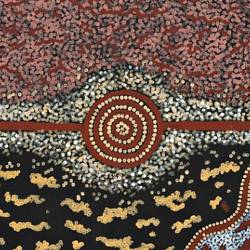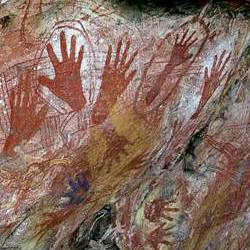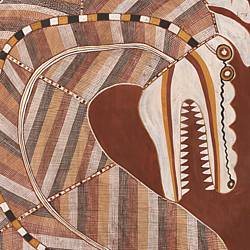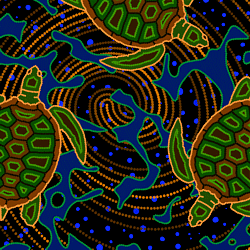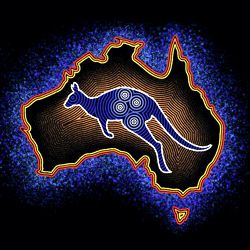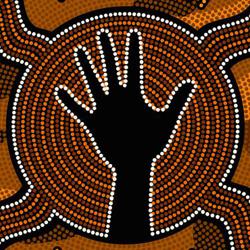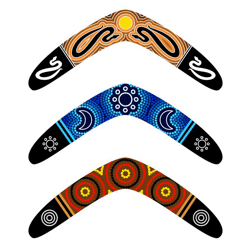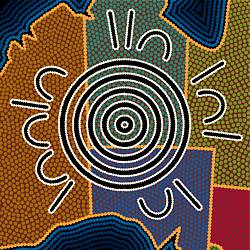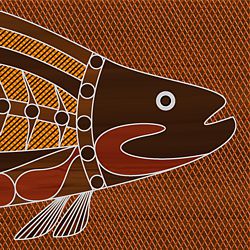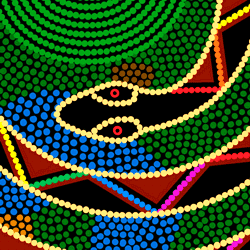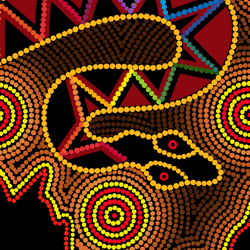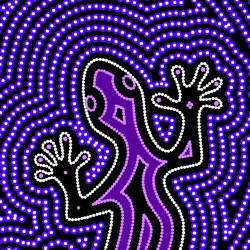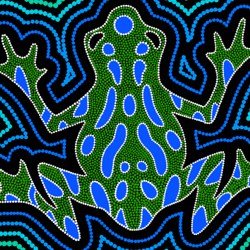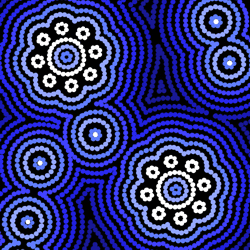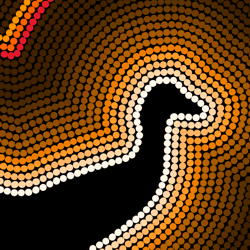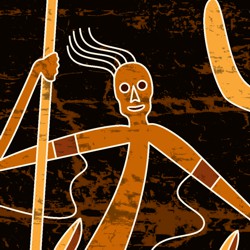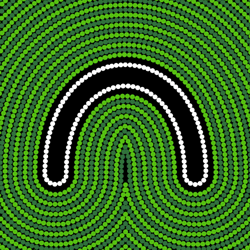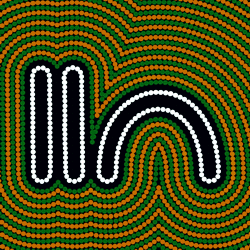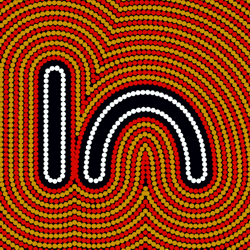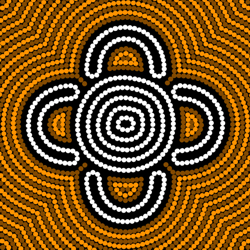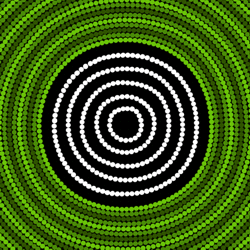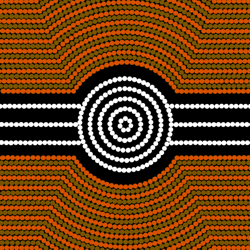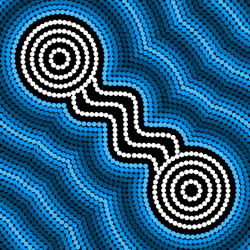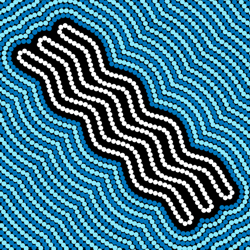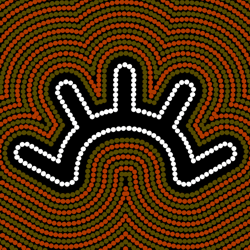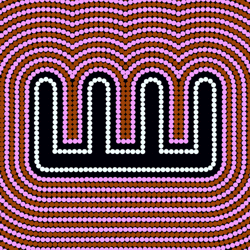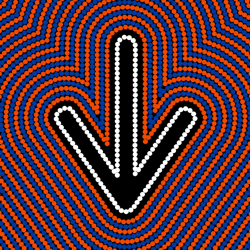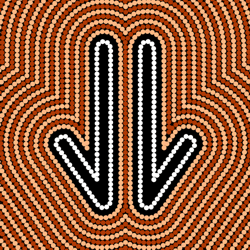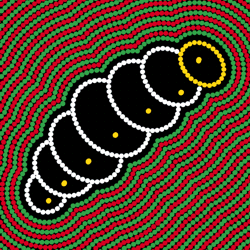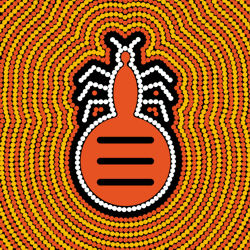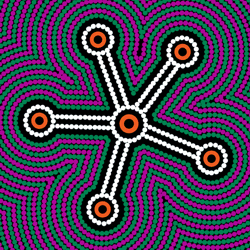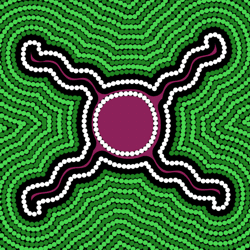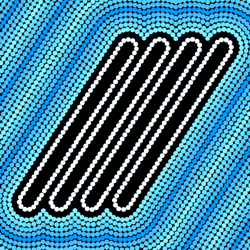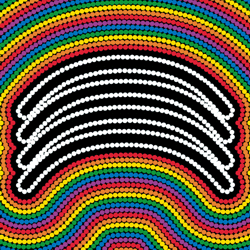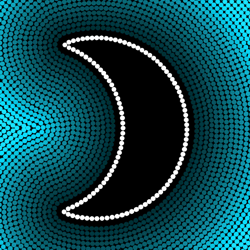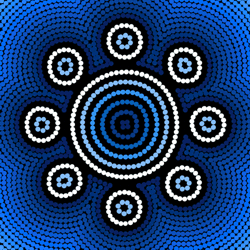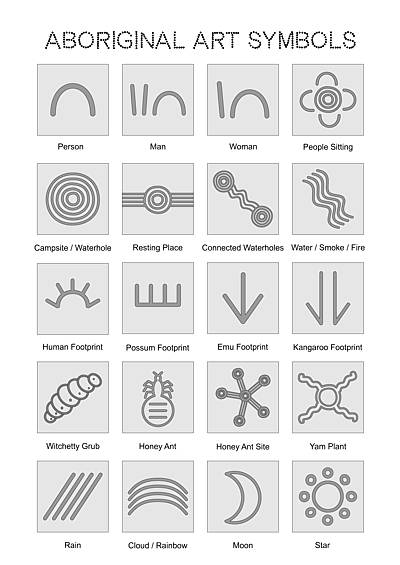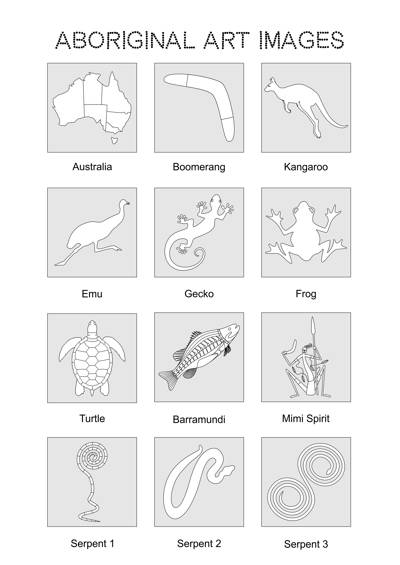Aboriginal Art Dreaming Stories - Ilipari and Katja
The Dreaming story of Ilipari and Katja carries a message about our behaviour and its effect on others.
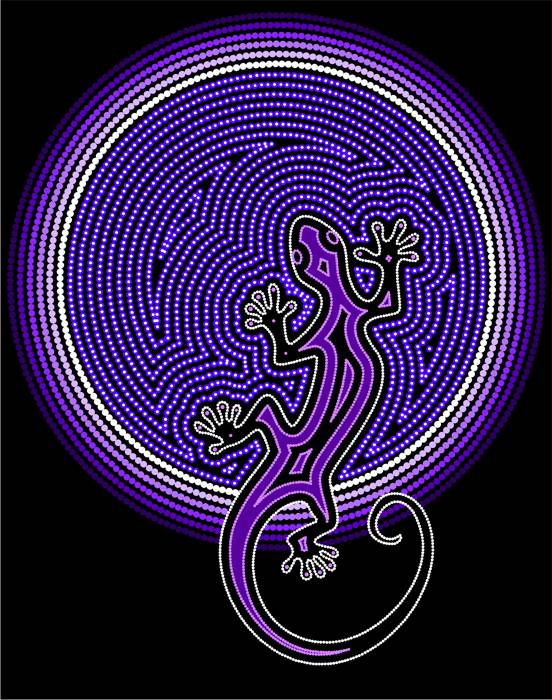
'Ilipari the Lizard'
Long ago in the Dreaming there was a lizard called ‘Ilipari’ which means ‘big lizard’ in the Kalkadoon language. His magnificent markings and thorny skin were so extraordinary that he was admired by all the other lizards. Sadly, the praise he received made him vain and he began to believe he was superior to the rest of the animals.
One day, Kookaburra who was noted for his sense of humour, decided to teach Ilipari a lesson that would change his puffed-up opinion of himself. When Kookaburra saw Ilipari alone at the billabong he flew over and remarked, “It’s such a shame, Ilipari, that your thorny skin is so rough. The lizards like it but the other animals are not so keen. They think it’s ugly. If it was smooth, then all the animals would admire your good looks and hold you in the highest esteem.” Knowing that he had planted the seed of an idea in Ilipari’s mind, Kookaburra flew off laughing.
That night, Ilipari could not stop thinking about what Kookaburra had said. Although he was the most handsome of the lizards, that was not enough for him. He longed to be the most distinguished creature in the animal kingdom and as he fell asleep he was consumed by that selfish thought. As he slept, the moon spirit heard Ilipari’s vain dreams and granted his wish to change his appearance.
Next morning, Ilipari woke up with a strange feeling that something was different. As usual, he made his way down to the billabong for his morning drink but was shocked when he saw his reflection in the water. Startled, he looked again and was horrified. Although he now had the smooth skin he desired, he had shrunk to the size of a small gecko. All the other animals sniggered at his embarrassment because they felt he had received his just deserts. When Kookaburra arrived Ilipari asked, “Why did you suggest those ideas to me?” Kookaburra replied, “Ilipari, we were tired of your vanity. Everyone could see how handsome you were, but you insisted on reminding us how much better you looked than everybody else. This only made us feel small, so now you also know how that feels.”
From then on, Ilipari was called ‘Katja’ which means ‘small lizard' in the Kalkadoon language. Since that time he only comes to the billabong at night to avoid the laughter of the other animals. To this day he has still not learned that the answer to his problems is to accept himself as he really is.
This story is based on 'How Ilipari became Katja' from the ‘Kalkadoon’ (Kalkatungu) people from Mount Isa region of Queensland. Like many Dreaming stories it carries a message about our behaviour and its effect on others.
The Painting Process for our Page Illustration
Many of the topics in our Aboriginal Art pages are illustrated with a painting that was inspired by the theme of that page. For each of these we have created a step by step slide show that deconstructs the image to reveal the painting process and inspire possibilities for your own ideas. The images and symbols used to create our illustrations can be found in our menu at the foot of the page. They are available for you to download to help with creating your own artworks.
- ilipari-the-lizard-12
Ilipari the Lizard
- ilipari-the-lizard-2
1. The outline of Ilipari is drawn with a white color pencil on a black ground.
- ilipari-the-lizard-3
2. An overlapping circle is drawn to represent a waterhole.
- ilipari-the-lizard-4
3. Ilipari is outlined with white dots.
- ilipari-the-lizard-5
4. Violet colored markings are painted on Ilipari’s body.
- ilipari-the-lizard-6
5. Ilipari’s markings are highlighted with lilac colored dots.
- ilipari-the-lizard-7
6. The waterhole and Ilipari are outlined with a contour of violet dots.
- ilipari-the-lizard-8
7. Further concentric contours of dots are added.
- ilipari-the-lizard-9
8. The waterhole is filled with concentric contours of dots which naturally form a refractive wave pattern.
- ilipari-the-lizard-10
9. The waterhole is outlined with white dots to suggest a reflection of the moonlight.
- ilipari-the-lizard-11
10. Further concentric rings of dots are added, fading into the darkness.
- ilipari-the-lizard-12
11. Smaller dots of white are superimposed on the dots in the waterhole to suggest the shimmering moonlight on the water.

(Click on the play buttons or swipe back and forward to explore each stage of our painting.)
Key Stages of the Painting
-
The outline of Ilipari is drawn with a white color pencil on a black ground.
-
An overlapping circle is drawn to represent a waterhole.
-
Ilipari is outlined with white dots.
-
Violet colored markings are painted on Ilipari’s body.
-
Ilipari’s markings are highlighted with lilac colored dots.
-
The waterhole and Ilipari are outlined with a contour of violet dots.
-
Further concentric contours of dots are added.
-
The waterhole is filled with concentric contours of dots which naturally form a refractive wave pattern.
-
The waterhole is outlined with white dots to suggest a reflection of the moonlight.
-
Further concentric rings of dots are added, fading into the darkness.
-
Smaller dots of white are superimposed on the dots in the waterhole to suggest the shimmering moonlight on the water.


